Raising The Flag On Iwo Jima, 1945
This is one of the most iconic pictures in American history. Taken by Joe Rosenthal of the Associated Press on February 23, 1945, this is the only photograph awarded the Pulitzer Prize for Photography in the same year as its publication.
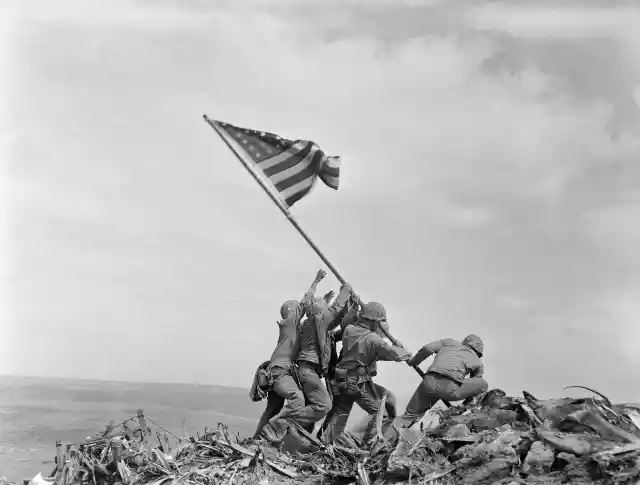
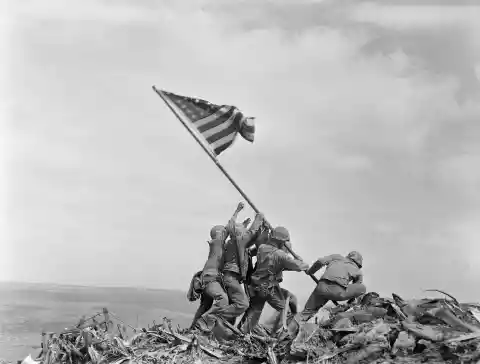
The photograph portrays six U.S. Marines raising the American flag atop Mount Suribachi during the Battle of Iwo Jima in the final stages of the Pacific War. Three of the six Marines in the photograph were killed in action during the battle.
Coretta Scott King, 1969
After the tragic murder of Martin Luther King, the world was in shambles, and it seemed as if all hope was lost. Mr. King helped form a path of empathy and equality, and this award helps prove this point. Moneta J. Sleet Jr., the photographer, was the first African-American man to win the Pulitzer and the first African American to win the award for journalism.
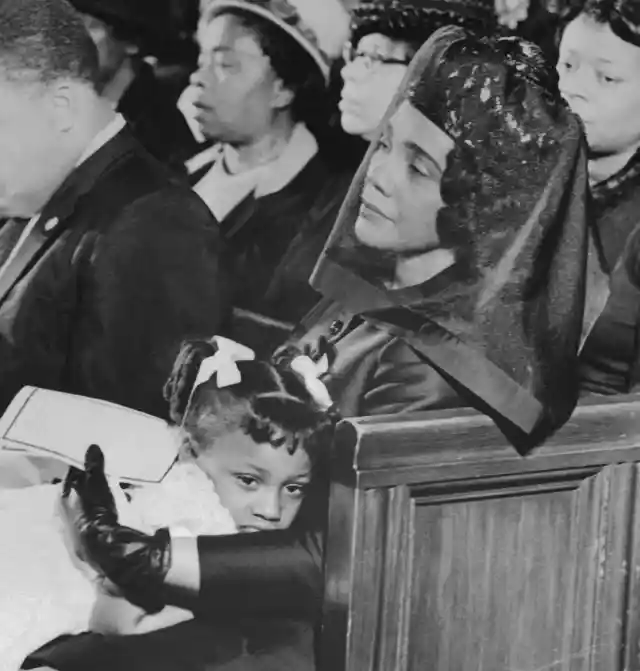

The picture shows a moment between mother and daughter, grieving the assassination of their husband and father. Luther King was more than an icon for many people; at the end of the day, he was a family man.
Homecoming, 1944
Earle L. Bunker was a photographer for the Omaha World-Herald since 1929. In 1944, Bunker won the Pultizer for best photography for capturing this special moment between a daughter and his father.

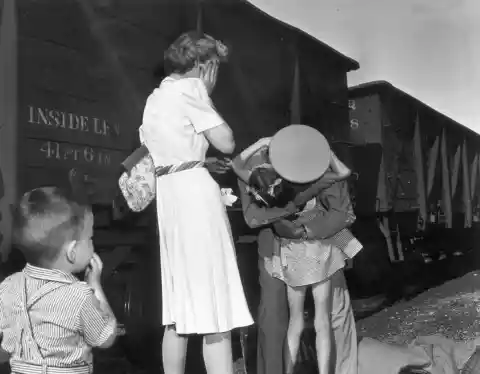
Lieutenant Colonel Robert Moore was coming back home after serving in WW2, after being away from his family for 16 months. Bunker waited twenty-four hours, next to the family, to capture the first hugs and tears.
Olympic Games, 1985
The winners were the Photography Staff of The Register from Santa Ana, CA, who were able to capture the most thrilling moment to those athletes who were giving their all. One of the pictures that captivated my eyes was a portrait of High Jumper Dwight Stones.


High jumper Dwight Stones was a long shot. Even though he was awarded two Olympic bronze medals and became a three-time world record holder in the men's high jump, he was 30 years old when the picture was taken. Very few people expected him to make the Olympic team, but he has proved them wrong.
Flight Of Refugees Across Wrecked Bridge In Korea, 1951
Max Desfor was on photographer’s duty traveling with the American frontline troops during the Korean war. He painted the picture of Pyongyang residents and refugees crawling over a destroyed bridge across the Taedong River to escape the advancing Chinese Communist troops.
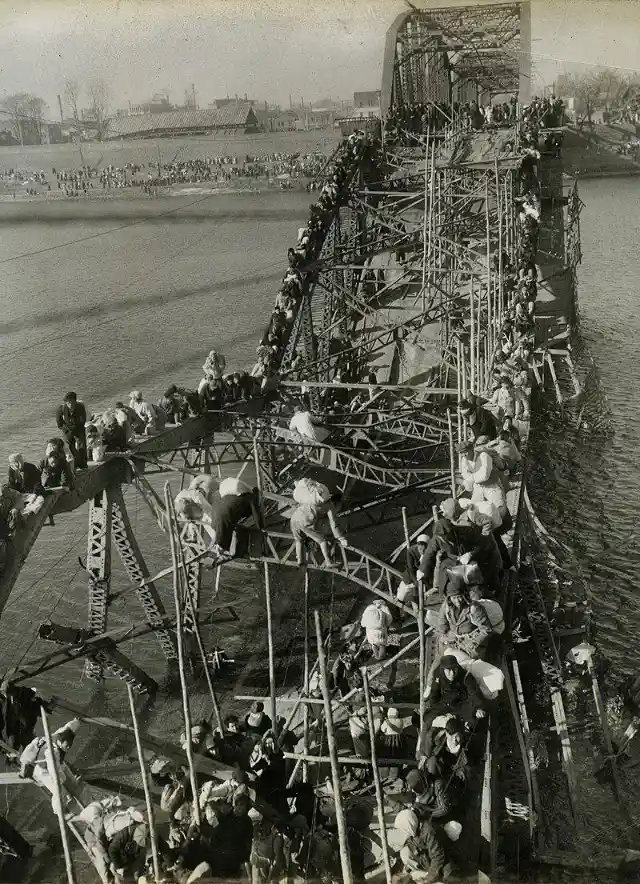
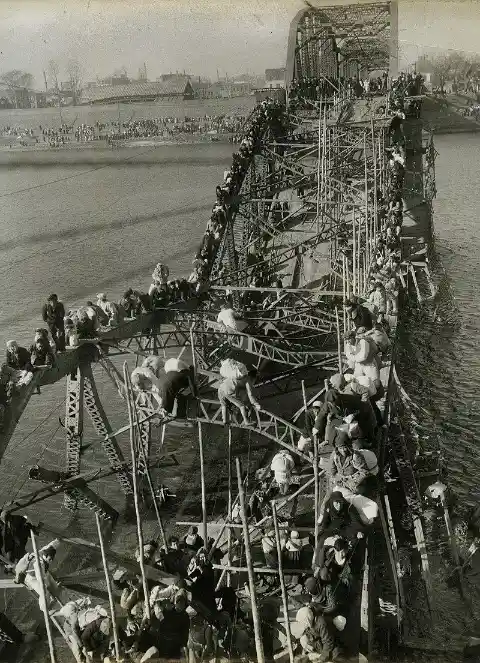
"All of these people who are literally crawling through these broken-down girders of the bridge," he said, "they were in and out of it, on top, underneath, and just barely escaping the freezing water." It must have been horrific to witness such a tragic event.
Lull In The Battle, 1975
Gerald H. Gay was making an almost instinctive response to a radio scanner crackling fire, and by the time he arrived, all that was left was a semi burnt house. He didn’t see any of the firefighters at the scene, but when he looked around, he saw quite the image.

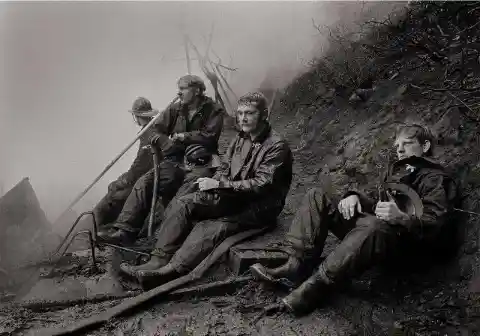
He found four exhausted firefighters slumped against a muddy bank. "I took six or eight frames, all at once," Gay recalled. "They all had a deep, reflective look. I could tell they were rethinking what they'd just been through." That portrait put his name on the papers, and he won the Pulitzer Award.
Serious Steps, 1962
This picture does not seem special at all, until you learn who these men are. These are John F. Kennedy and Dwight D. Eisenhower, photographed as they were having a serious conversation about the future of the country.


The photo was taken just after the press secretary told the photographer not to take any more pictures. The photographer continued regardless and captured the two men from behind.
Survivors Of Rwanda And Burundi,1998
Capturing the exile awarded Martha Rial the 1998 Pulitzer Award. The photographer traveled to Tanzania twenty-three years ago to document the refugee crises faced by the people of Rwanda and Burundi.
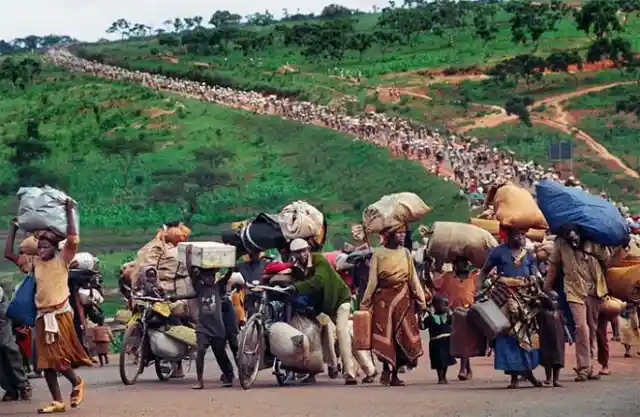
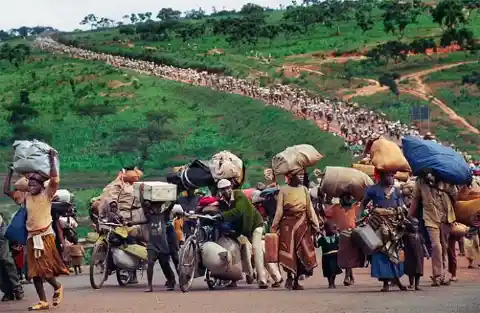
Capturing the exile awarded Martha Rial the 1998 Pulitzer Award. The photographer traveled to Tanzania twenty-three years ago to document the refugee crises faced by the people of Rwanda and Burundi.
A Turbulent Rescue, 2010
Mary Chind witnessed a wild rescue. She saw a woman, later identified as Patricia Ralph-Neely (67), whose boat has been capsized and was fighting for her life.

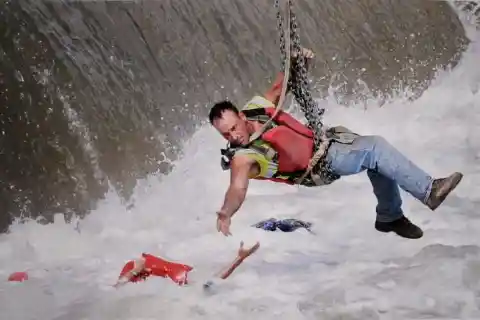
Jason Oglesbee, a construction worker, rigged himself to a crane and lowered himself to the water, in an attempt to reach out to Patricia. Like many of those trying to help, Jason struggled to save Patricia since the water was too agitated. Luckily, he finally was able to pluck her to safety, and both of them survived.
Water! 1943
Frank Noel is the photographer who received the second-ever award in this category, and it was thanks to a picture he took while being lost at sea. During World War II, Noel worked for the AP in the Pacific Theater. Trying to escape the Japanese invasion, malaria-stricken Noel paid for a passage on a British freighter bound for Rangoon, but the freighter was sunk by a Japanese torpedo.
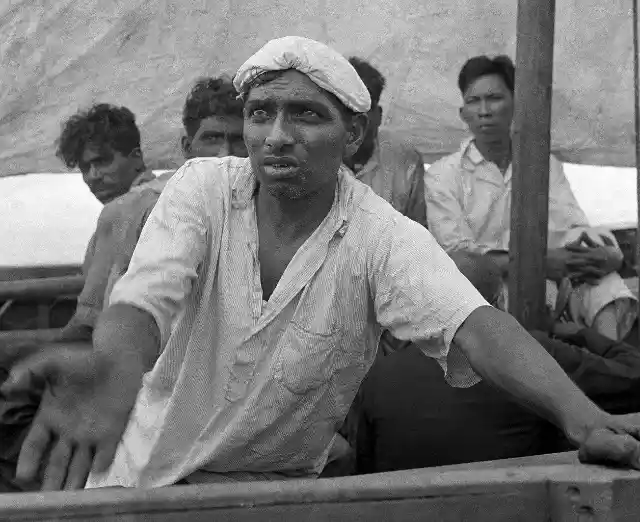
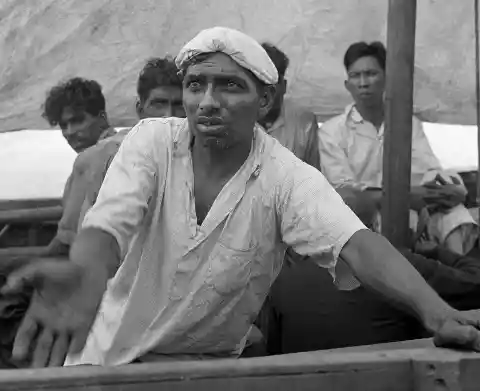
Noel was adrift in the Indian Ocean for three days when his lifeboat encountered another one. An Indian sailor on the other lifeboat requested water, but they had none as Noel's lifeboat was out of the water as well. Noel took a picture of the sailor, which was published after his lifeboat was rescued two days later.
Burst Of Joy, 1974
This iconic picture shows what seems to be a happy family reunion. On the right, we see a woman and her four children, joyfully running towards the man on the left, the father.
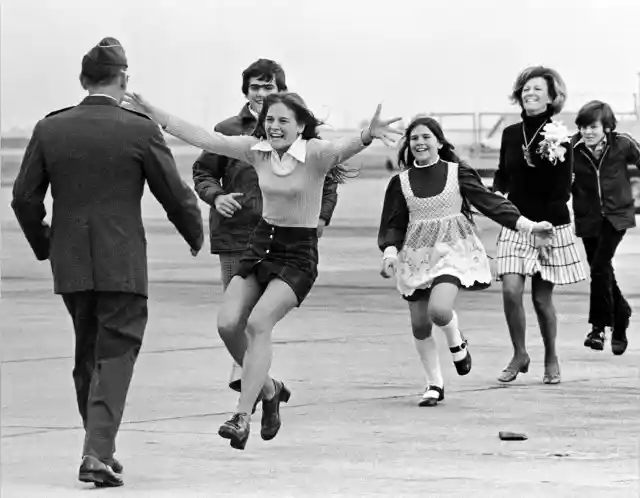
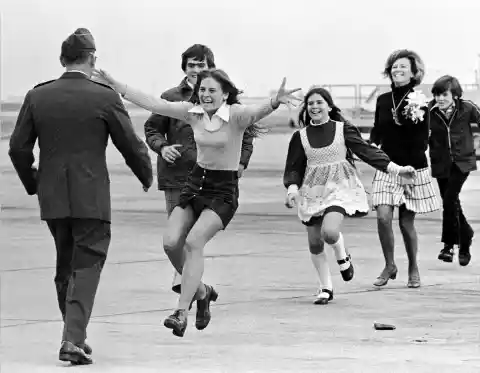
The man, Lt. Col. Robert L. Stirm, was meeting his family again after being imprisoned in Vietnam for five years. This photo marked the end of the Vietnam War.
Tarawa Island, 1944
1944 was quite the year for the Pulitzer. But we couldn’t miss this distressing picture. Frank Xavier Filan won that year’s Pulitzer award thanks to the photograph he took of dead Japanese soldiers in the Battle of Tarawa.

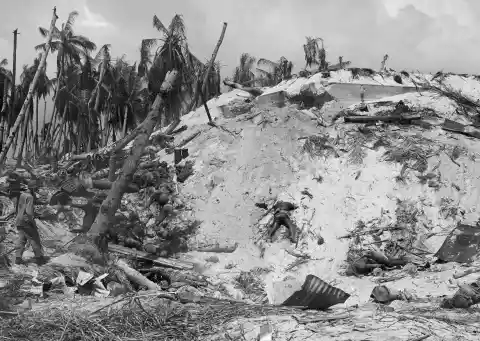
This battle took place in 1943 between the United States and Japan at the Tarawa Atoll in the Gilbert Islands. Nearly 6,400 Japanese, Koreans, and Americans died in combat. It was a bloody fight and a dangerous position for Filan. I guess that was part of the job.
PTSD, 2012
The series of very personal and traumatic pictures of Brian Scott Ostrom won the second Pulitzer award for Craig F. Walker. I cannot recommend you enough to see the whole series; to take a peek at what his time in Iraq caused to his mental health. Every picture tells a little bit of his day-to-day struggle, but this sums it up.
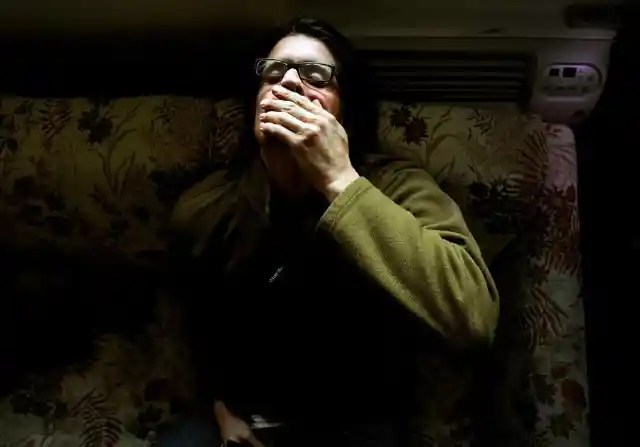
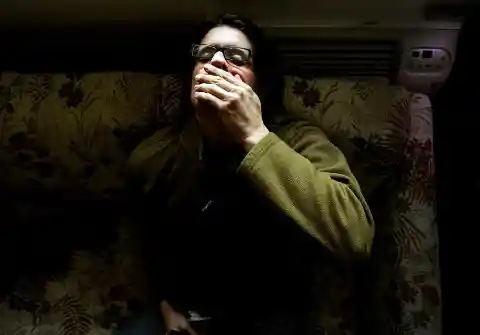
Brian pressed his hand over his mouth as he tried to calm a panic attack at his apartment. Scott said it's been hard to find meaning in his life since 2007 when he was honorably discharged from the U.S. Marine Corps. He tried to commit suicide many times, luckily he did not succeed and sought help.
Bill Clinton, 1993
Before a huge scandal tarnished his reputation forever, Bill Clinton was regarded as the coolest president America ever had.


One of the things that made him cool was how skilled he was at playing the sax. This picture of Clinton playing on The Arsenio Hall Show won a Pulitzer prize.
Gold Medal, 1993
Shall we end on a good one? Nothing brings more joy to a nation than a gold medal. In 1992, Ken Geiger and William Snyder covered the Olympics in Barcelona, Spain.
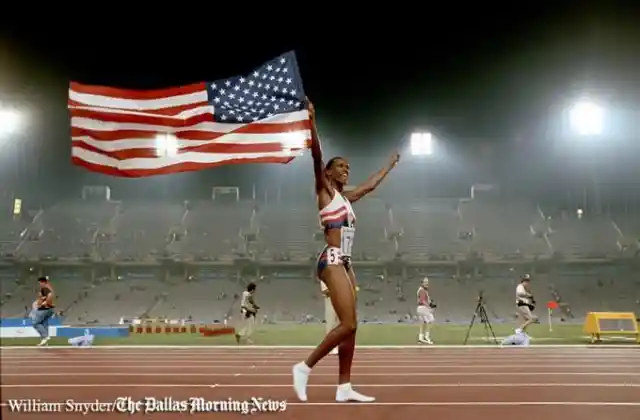

USA's Jackie Joyner Kersee walks Barcelona’s Olympic Stadium track on Sunday night after winning the gold medal in the Heptathlon competition during the XXV Summer Olympic Games. It must have been a beautiful day for many.
The Dancing President, 1997
Boris Yeltsin served as the first president of the Russian Federation from 1991 to 1999, after the fall of the Soviet Union. Here, we can see him dancing at a rock concert as part of his reelection campaign.
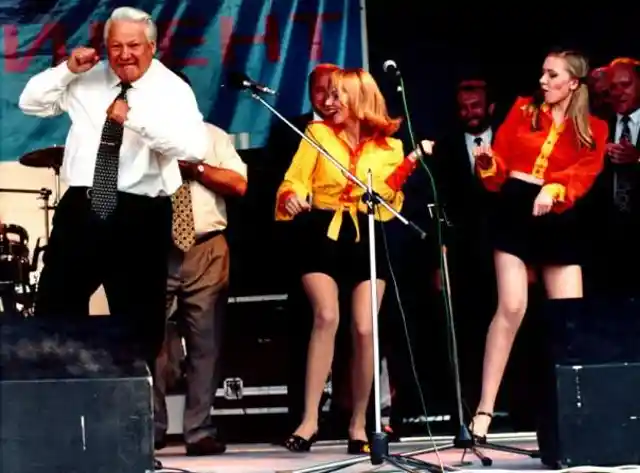
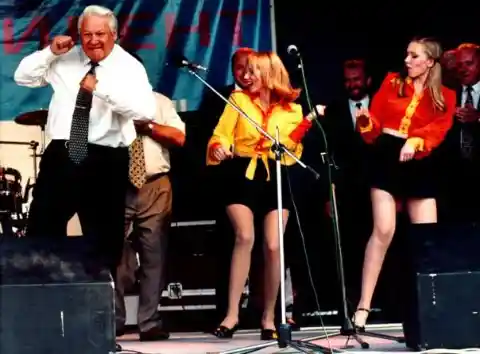
This fun side of the president did make him popular with people. However, due to massive internal pressure, he resigned in 1999 and was succeeded by Vladimir Putin.
Babe Ruth Bows Out, 1949
Babe Ruth is regarded by most people as the greatest Baseball player of all time. Seeing him play for the last time and say goodbye to the sport was an emotional moment for thousands of people.
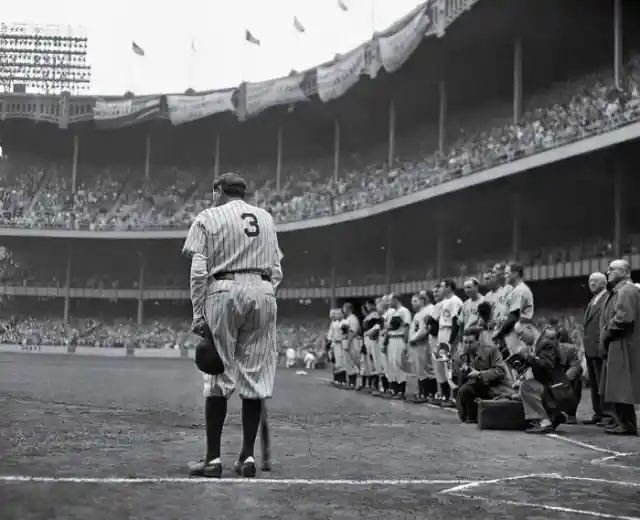
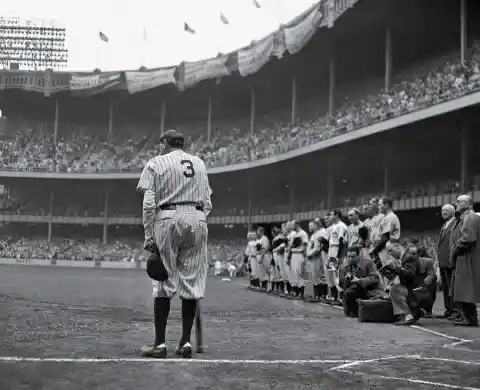
Here, we can see Ruth bowing out, using his bat as a cane and wearing his iconic number 3 shirt. The whole stadium cheered for him as he said goodbye. He was battling cancer at the time, and he passed away two months later.
Adlai Stevenson, 1953
Photographer Bill Gallagher was known for taking comedic pictures. He took this photo of Democratic presidential candidate Adlai Stevenson in a very discrete way by kneeling on the floor. This way, he managed to capture the hole in the candidate's shoe.
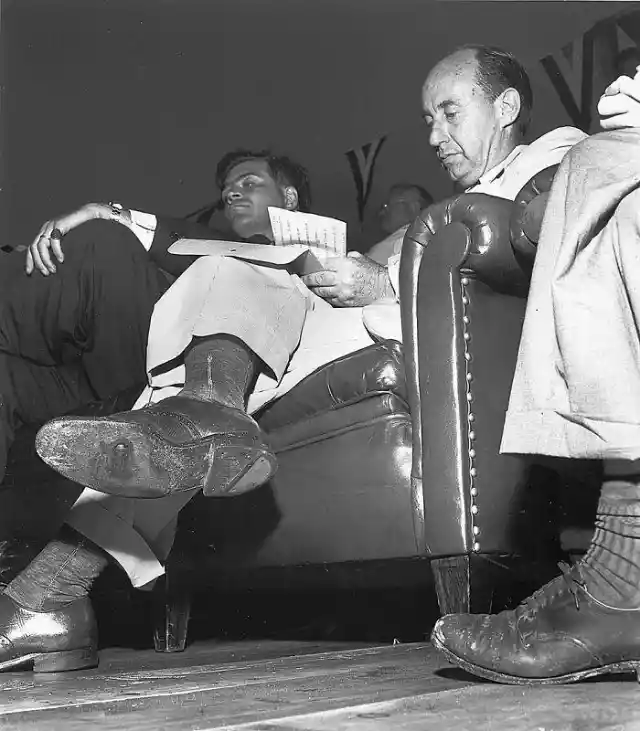
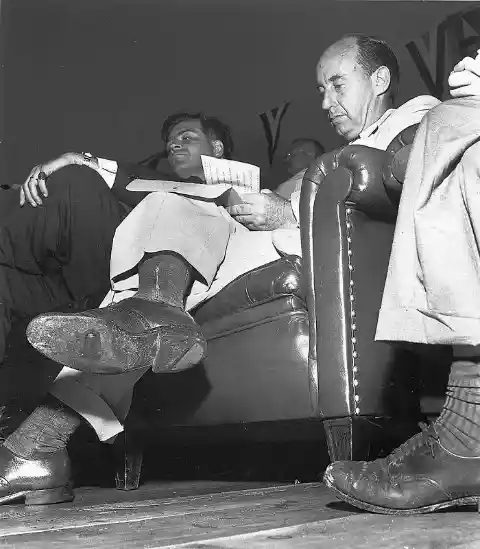
He always presented himself as a very wealthy, distinguished gentleman, so the fact that he had a hole in his shoe made waves. He was mocked by hundreds of people, who sent him new shoes as a prank.
Fleeing Myanmar, 2018
The Rohingya are an ethnic group that belong to the Muslim faith. For several years, they have been persecuted and murdered in Myanmar.
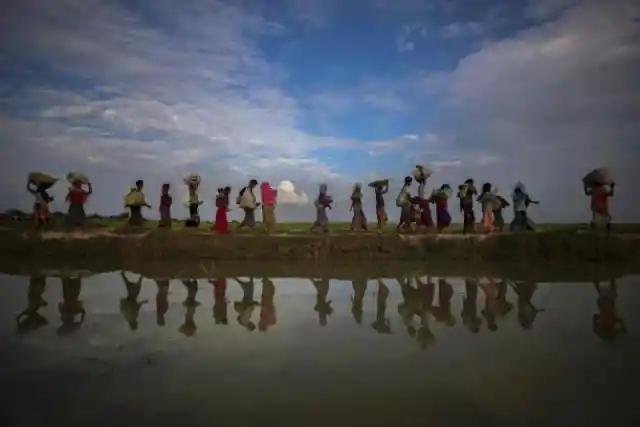
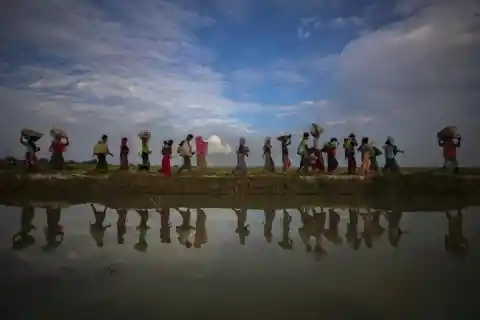
This photo shows a group of Rohingya fleeing their home country of Myanmar in search of a new home in Bangladesh. Sadly, only very few make it.
Undocumented Immigrants, 2003
There are many undocumented immigrants in the United States, who have fled their countries in search of a better life. However, getting to their destination is extremely difficult.


Many people put themselves in danger in order to cross the border. This young Honduran boy can be seen riding a freight through Mexico to get closer to the USA. His trip went on for 1,500 miles.
Shooting Of James Meredith, 1967
The March Against Fear took place in 1966. Many activists marched from Memphis, Tennessee, to Jackson, Mississippi, in order to encourage African Americans to register to vote and to challenge the racist culture of the time.
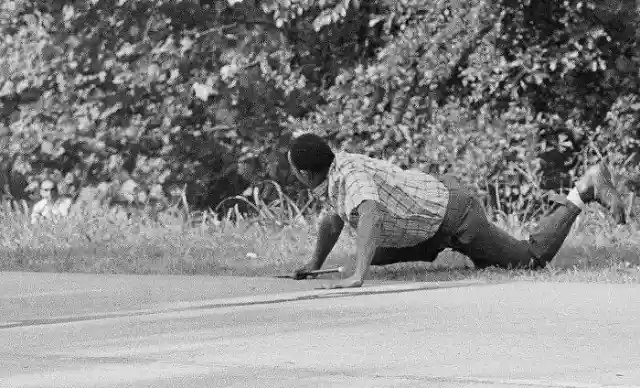

Activist James Meredith was shot by a white supremacist sniper that day, and the moment was captured in this photo. Thankfully, Meredith survived.
Female Circumcision Rite, 1996
Female circumcision is illegal in most countries, given that it is considered cruel and unnecessary. However, many countries in Africa still carry out this tradition.
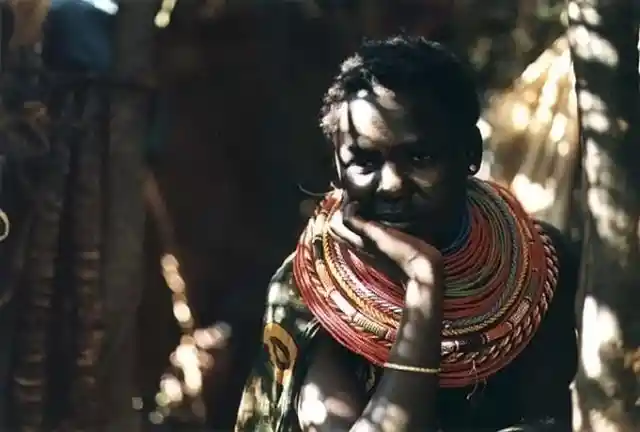
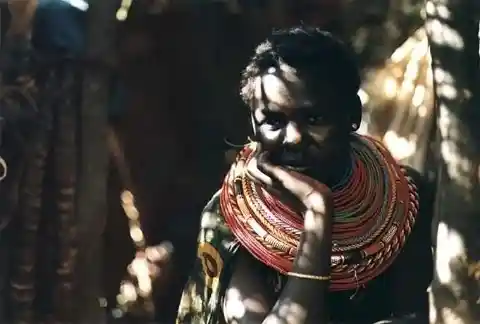
This photo shows a young girl in Kenya, who is about to undergo the painful ritual. Photographer Stephanie Welsh captured every moment of the rite, shedding light on this barbaric tradition.
Johnny Bright Incident, 1952
Photographers John Robinson and Don Ultang suspected that African American player Johnny Bright was being targeted during football games. To get to the bottom of it, they set up a camera that would focus on Bright during a game.
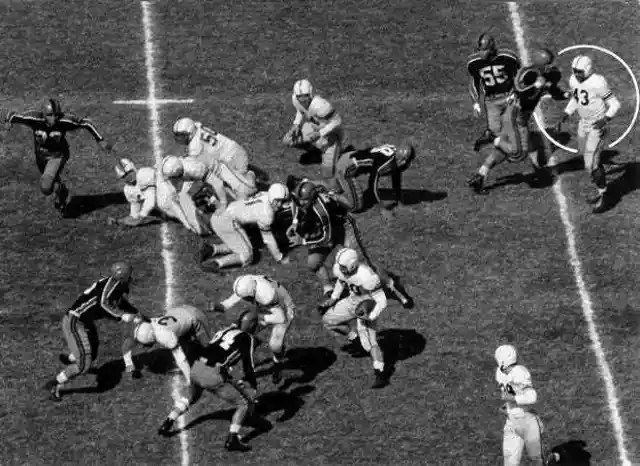
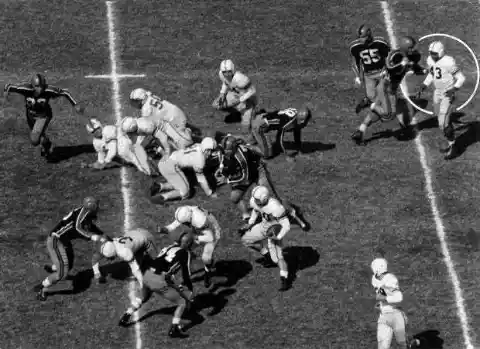
This way, they managed to prove that white players of the opposing team were constantly targeting him. Bright got knocked down three times and had his jaw broken during the game.
Stepping On The KGB, 1992
After the fall of the Soviet Union, people were no longer afraid to show their disagreement with the old regime. Many statues of former leaders were taken down.

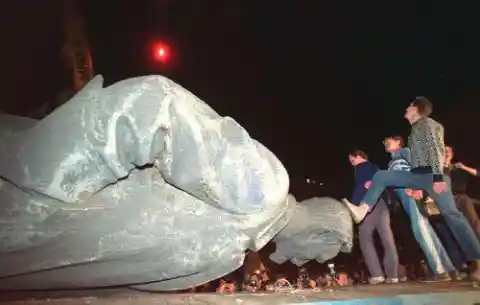
This photo shows people stepping on a statue of Felix Dzerzhinsky, the founder of the KGB, who was responsible for mass arrests and executions.
Faith And Confidence, 1958
The artist, William C. Beall, captured a wholesome moment between a policeman patiently reasoning with a two-year-old boy trying to cross a street during a parade. It's the most-applauded picture ever to appear in the Washington Daily News.
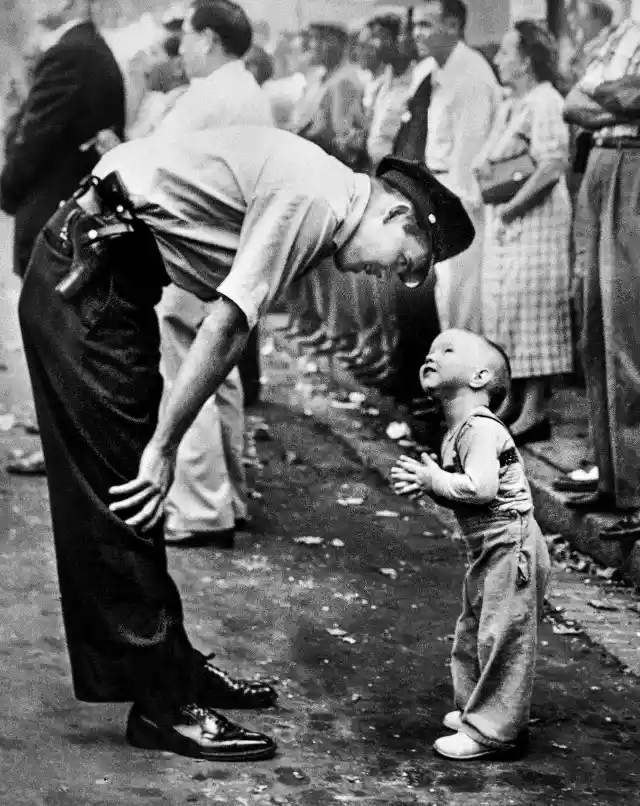
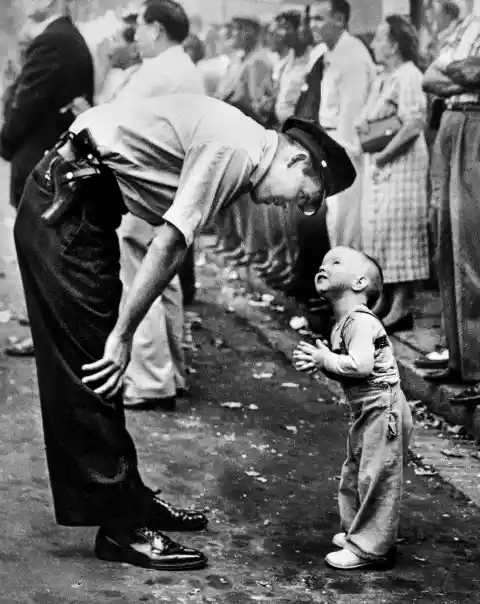
Beall started his career at a young age. He was sixteen when a photo agency hired him. Later on, he became the chief photographer for The Washington Post. This shows how important a little picture can be.
Reagan Is Shot, 1982
There have been many assassination attempts against presidents over the years. One of them was the attempt against Ronald Reagan in 1981.

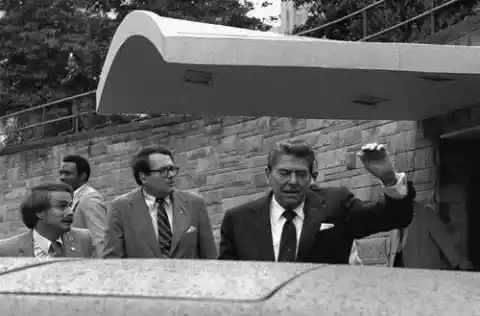
The president was shot on his left side by John Hinckley Jr., a deranged Jodie Fosterfan who thought he'd gain the actress' favor by killing the president. Reagan survived.
Barack Obama, 2009
Photographer Damon Winter followed Barack Obama's presidential campaign closely. He managed to photograph the president every step of the way.
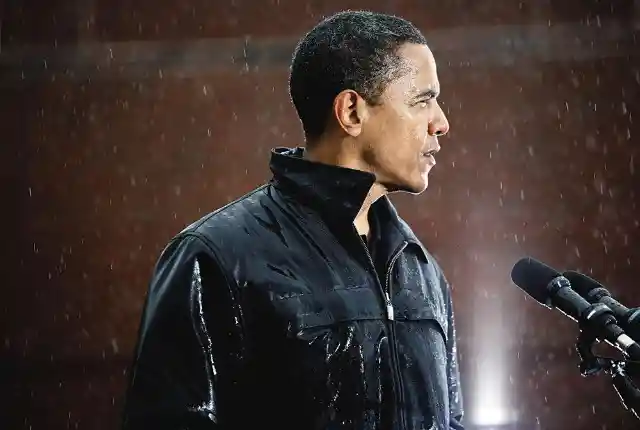
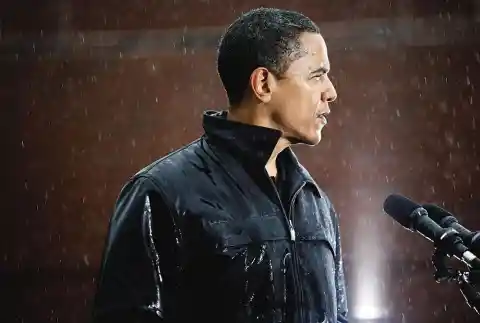
This photo shows president Obama, who was then a senator, giving a speech during a storm. This photo became inspirational for many of his supporters.
Boy Gunman And Hostage, 1948
Frank Cushing was an American photographer who served in the U.S. Army Air Corps as an Aerial Photographer. His most renowned work is this picture in which a 15-year-old boy is holding another boy hostage in an alley.

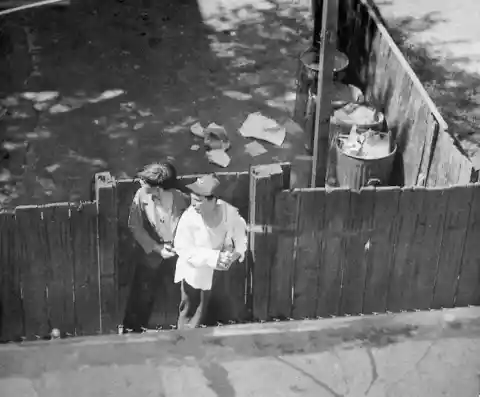
Cushing was sitting in his radio car outside a restaurant, waiting to capture victims of a holdup. An alert came from the radio of a police car parked alongside his vehicle. A shooting had taken place, an officer was injured, and a hostage was held. He went to the scene and photographed the event.
Tragedy By The Sea, 1955
John L. Gaunt was an American photographer. On the morning of April 2, 1954, John Gaunt was lounging in the front yard of his beach house in Hermosa Beach when he heard a neighbor shout, “Something’s happening on the beach!” Instinctively, John grabbed his camera and rushed over to see a horrified couple clutching each other.
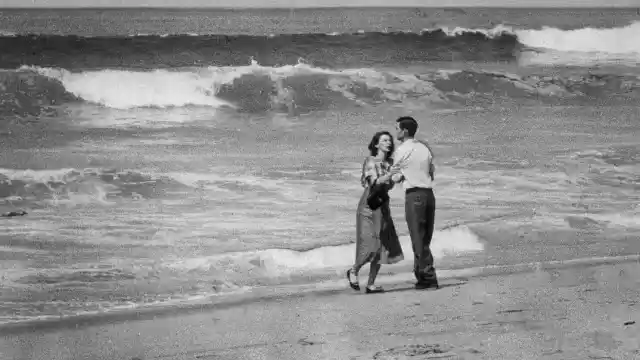
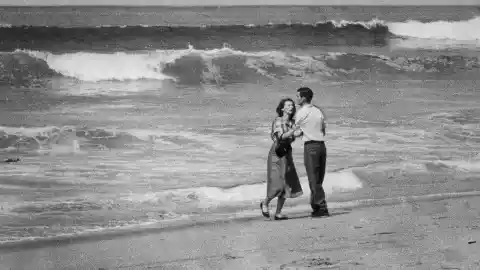
The young couple, Mr. and Mrs. John McDonald, was seemingly desperate so, Gaunt knew something was up. Their nineteenth-month-old son, Michael, had been playing along the shoreline and got lost in the ocean. The tragic moment was immortalized by the photographer.
The Kiss Of Life, 1968
Rocco Morabito was an American photographer who spent the majority of his career at the Jacksonville Journal. He won the 1968 Pulitzer Prize for Spot News Photography for “The Kiss of Life.”The photograph was published in newspapers around the world.
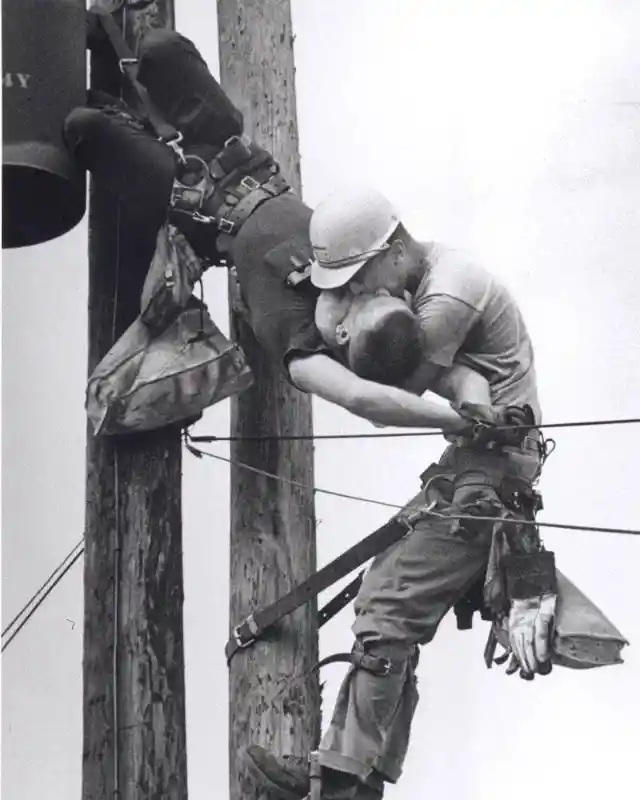

You might be wondering what the origin of this photograph is, well, let me tell you. Morabito was driving when he spotted an electrician hanging upside down on his safety belt struck by 4,160 volts of electricity. He called an ambulance immediately, and in the meantime, another lineman climbed up and rescued his colleague by performing mouth-to-mouth.
Andrea Doria Sinking 2, 1957
The dramatic sinking of luxury sea liner Andrea Doria was captured from a small plane by Harry Trask, who was suffering from airsickness. He was able to take many shots, but this is the one that got the price and glory.
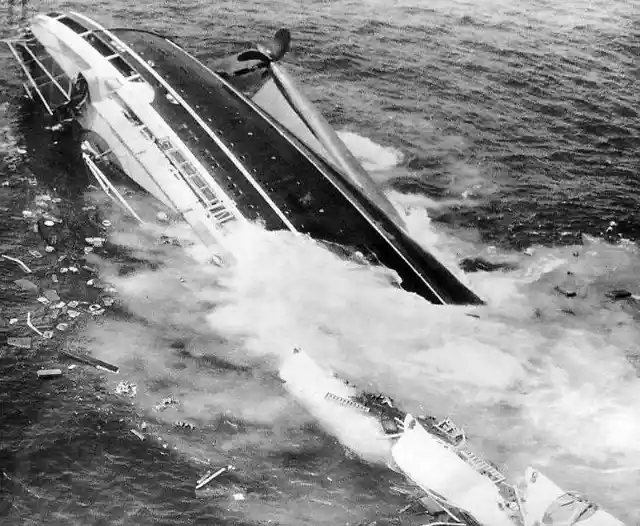
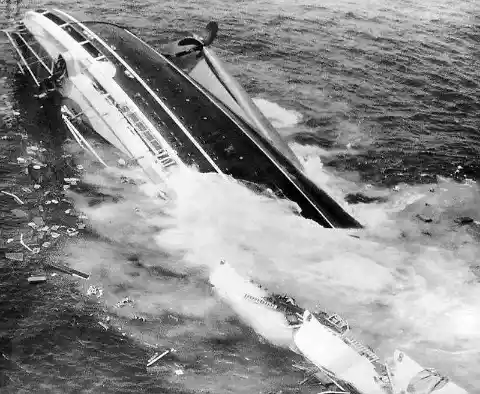
The picture was taken nine minutes before the ship sank. SS Andrea Doria, home-ported in Italy, lost 46 lives due to the sinking. Originally, it had a total o 1706 members, including passengers and crew.
Near Collision At Air Show, 1950
Oakland Tribune’s Bill Crouch was awarded the prize in 1950 for this picture. On his day off, Bill was attending an air show with more than 60,000 spectators who were stunned by a near-collision of a biplane and a huge B-29.
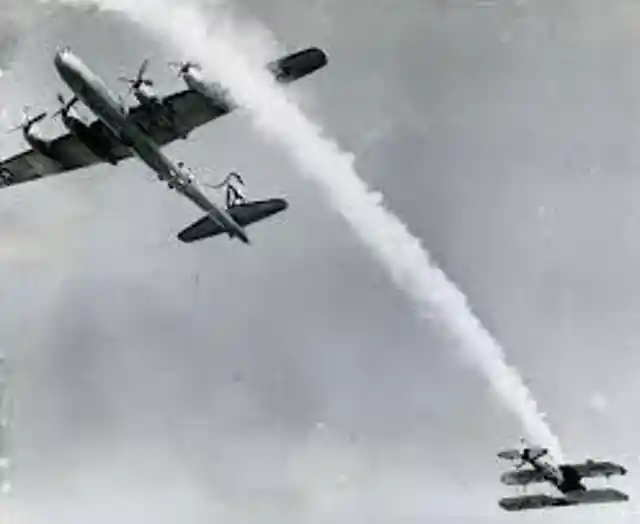
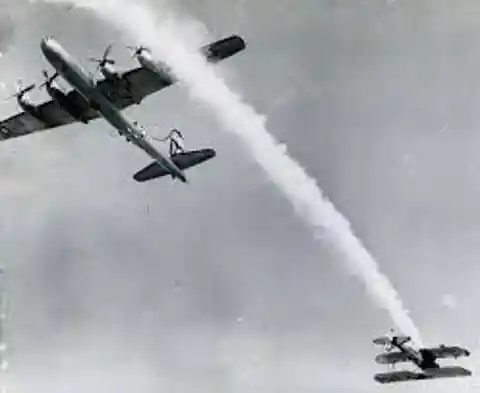
Three B-29 Superfortresses were supposed to fly through Derby's smoke trail, but the B-29s came a bit too early, and the biplane came within five feet of hitting the B-29's wing. Call it a close call.
Burn Survivor, 2001
Matt Rainey followed the journey of two students who suffered critical burns after a fire broke out in their dormitory at Seton Hall University.
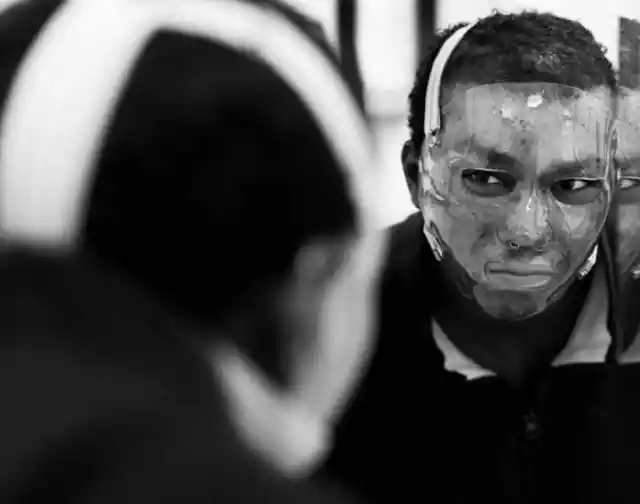
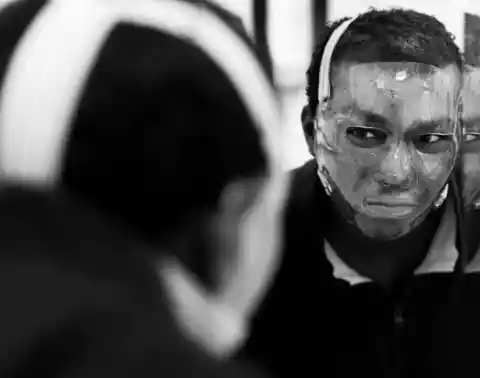
Here we see Shawn, one of the survivors, as he looks at himself wearing a mask designed to prevent scarring. He decided he did not like it, and chose to live with the scars instead of wearing the mask 12 hours a day.